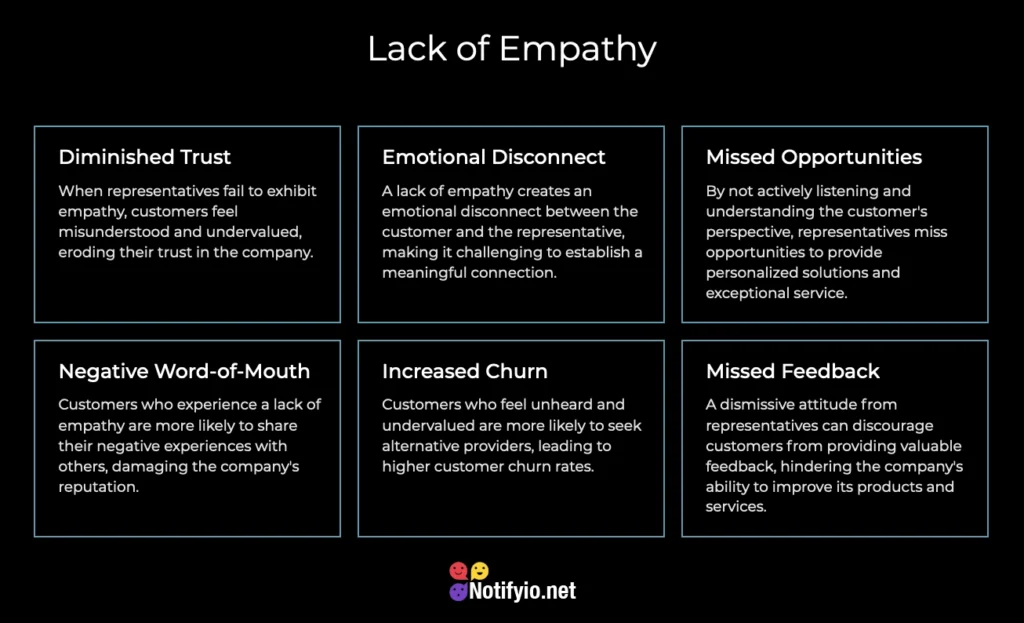Avoid These Mistakes! 10 Examples of Bad Customer Service and How to Turn a Negative Review Into a Positive Experience Using Templates
We all understand that providing a positive customer experience is essential for success. Even one negative review can harm your online reputation and drive customers away. You must know the common mistakes in customer service. Then, you can turn a bad experience into a positive one.
A Microsoft study shows 58% of shoppers have ditched a purchase due to bad service. Thus, excellent service is vital for businesses. This guide will highlight real-life examples of bad service. It will also offer templates to handle negative reviews productively. This way, you can use them to grow and improve.

Key Points
- Understand the impact of poor customer service on your business
- Learn from real examples of bad customer experiences
- Use templates to respond effectively to negative reviews
- Turn negative feedback into an opportunity for improvement
- Provide exceptional customer service to boost satisfaction
The Impact of Poor Customer Service
Before we look at the examples, let’s understand the big impact of bad customer service. A negative experience can lead to:
- Loss of existing customers
- Damage to your brand reputation
- Decreased customer loyalty
- Missed opportunities for revenue growth
In contrast, businesses that prioritize customer satisfaction can benefit from:
- Increased customer retention
- Positive word-of-mouth marketing
- Enhanced brand reputation
- Competitive advantage in the market

10 Examples of Bad Customer Service
- Customers value their time. Long wait times, whether on the phone or in person, frustrate them and make them see your business poorly.
- Poor Communication causes confusion. It comes from unclear or incomplete information, lack of follow-up, or poor listening. These can leave customers feeling unvalued.
- Unresponsive Support is failure to reply quickly to customers. It can damage trust and create a feeling of indifference.
- Lack of Empathy: Customers want to feel understood and valued. Lack of empathy or dismissive attitudes from reps can hurt. They are in customer service.
- They expect reps to know about the products or services. Insufficient knowledge can lead to frustration and dissatisfaction.
- Inconsistent Experiences: Service quality varies across channels or locations. This can confuse and erode customer confidence.
- Policies are needed. But, sticking to them rigidly without considering people’s situations can push customers away. It can also create bad experiences.
- Lack of Accountability: Customers appreciate when representatives take responsibility for resolving issues. Passing the buck or assigning blame can damage the customer-business relationship.
- Poor Handling of Complaints leads to trouble. Failing to fix customer complaints fast and well can make the situation worse. It causes more unhappiness.
- Unprofessional behavior is rude or dismissive. It can leave a lasting bad impression on customers.

Using Templates to Respond to Negative Reviews
Negative reviews are inevitable, but how you respond can make all the difference. Here are some templates you can use to turn a negative review into a positive experience:
Acknowledging the Issue
“Thank you for taking the time to share your feedback. We understand your frustration and apologize for the poor experience you had. Your satisfaction is our top priority. We are grateful for the chance to fix this issue.”
Offering a Solution
“We value your feedback and would like to make things right. Please contact us at [contact information]. We can discuss a fix for your concerns. It will restore your trust in our products/services.”
Requesting Additional Information
“Thank you for bringing this to our attention. We take all feedback seriously. We would appreciate it if you could provide more details about your experience. This will help us investigate the matter well. It will also ensure it doesn’t happen again.”
Expressing Gratitude
“We appreciate you taking the time to share your feedback. Your insights help us find areas for improvement. They also help us serve all our customers better. Thank you for your patience and understanding as we work to resolve this issue.”
Inviting Further Dialogue
“We value your feedback and would like to discuss this matter further. Please contact us at [contact information]. We want to understand your experience and take steps to address your concerns.”

Turning Negative Reviews into Positive Experiences
Responding effectively to negative reviews is just the first step. To turn a bad experience into a good one, consider these strategies:
- Implement Customer Feedback: Use the insights gained from negative reviews to identify areas for improvement and make meaningful changes to your customer service processes.
- Train Your Team: Invest in training your customer service team on effective communication, empathy, and conflict resolution skills.
- Streamline Processes: Regularly review and optimize your customer service processes to eliminate bottlenecks, reduce wait times, and ensure consistency across all channels.
- Embrace Transparency: Be open and transparent about any issues or challenges your business is facing, and communicate proactively with customers about steps being taken to address them.
- Celebrate Wins: Recognize and celebrate instances where your team has successfully turned a negative experience into a positive one. Share these stories internally to reinforce the importance of exceptional customer service.

FAQ
- What are the most common causes of bad customer service? The most common causes of bad customer service include long wait times and poor communication. Also, people may lack knowledge about the product or service. Policies are inflexible, and reps have insufficient training.
- How can businesses recover from a negative review? To recover from a negative review, businesses should reply fast and professionally. They should spot the issue. They should offer a solution or ask for more details. They should thank the critic. They should invite more talk to fix the problem.
- Why is it important to respond to negative reviews? Responding to bad reviews shows your business values customer feedback. It is committed to addressing concerns. It also helps reduce harm to your online reputation. It shows future customers that you value customer satisfaction.
- What are the benefits of providing exceptional customer service? Giving great customer service can lead to: more loyal customers and positive word-of-mouth. It can also lead to a better brand and a market edge.
- How can businesses improve their customer service processes? Businesses can improve their customer service by: using customer feedback. They should also provide ongoing team training and eliminate bottlenecks. They should be clear. They should celebrate turning bad into good.
- What role does empathy play in customer service? Empathy is crucial in customer service. Customers want to feel understood and valued. A lack of empathy or dismissive attitude from service reps can harm the customer experience.
- How can businesses ensure consistency in customer service across different channels? To keep customer service consistent across channels, businesses should use the same processes. They should give all service reps thorough training. And, they should often monitor and review customer interactions on all channels.
- What are some best practices for handling customer complaints effectively? Best practices for handling customer complaints well include listening to the customer. You must acknowledge their concerns and take responsibility for fixing the issue. Also, you must provide clear and timely communication. Finally, you must follow up to ensure the customer is satisfied.
- How can businesses use customer feedback to improve their products or services? Businesses can use customer feedback. They can use it to find where to improve their products or services. They can also use it to prioritize feature requests or updates. It can give them valuable insights into customer needs and preferences.
- Why is it important to have knowledgeable customer service representatives? The reps must be well-informed. Customers expect this. They are essential because of it. Insufficient knowledge can lead to frustration and dissatisfaction among customers.
Businesses can avoid common pitfalls of bad customer service. They can do this by using effective strategies to respond to negative reviews. This turns challenges into opportunities for growth. Remember, every customer interaction is a chance to show your commitment to great service. It’s also a chance to build lasting relationships.



Leave a Reply